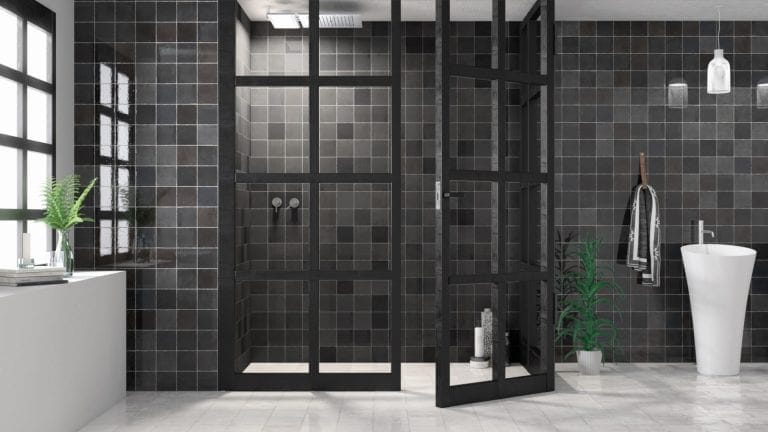Yes, Yes, Yes!!
Tiling can be a very daunting DIY job, especially with the size of tiles becoming larger and larger, but anyone who likes to take on a bit of home renovation and doesn’t mind getting their hands dirty (they are definitely going to get a bit dirty!!) can have a go.
The caveats are the same as always:
- Always make sure the walls or floors (the substrate) you’re tiling are suitable for receiving the tiles and have been prepared properly.
- Use the right tools for the job!! This will save you a lot of heartache and swear words in the long run. The basic tools such as trowels, spacers, mixing equipment etc are all readily available and quite inexpensive – even more specialist tools such as required for fixing large porcelain slabs can be hired.
- Use the right adhesives and grouts – not only will it make the job easier and more efficient while fixing but it will keep the tiles looking good for longer.

So now we have the caveats out of the way – let’s go ahead and offer a few tips:
- Whether you’re tiling walls or floors you ideally want a flat substrate. This may mean putting some levelling compound over a floor area first or smoothing out some lumps and bumps on a wall. Tiles are made to sit on flat surfaces, they won’t bend no matter how much you try!
- If your substrate is porous it will need priming (sealing) – this will seal all the dust and ensure a really good long lasting bond between the adhesive and the wall or floor.
- Take your time setting the tiles out. Find the centre of the area you’re tiling and work your way out from there – you really want to make sure there are no awkward little cuts anywhere around the edges. Half tile or bigger cuts are perfect, any smaller and you might want to shift your whole plan over by half a tile.
- If you’re fixing larger tiles consider using a lash and wedge system to keep the tiles flat and evenly spaced as you go along. These are a godsend!
- When your tiles are all fixed and the adhesive has dried spend some time carefully cleaning the joints to make sure the grout will go in nice and evenly.
- The home stretch – grouting. Grout needs to be thoroughly mixed before application, we would normally recommend using a small mixing paddle attached to a drill for this, to ensure all of the pigment is evenly dispersed, Make sure you clean all of the grout residue off the face of the tiles as trying to get it off once it’s tried can be a job in itself.
Once the grout has been washed off and dusted down, then congratulations – your tiled area should look fantastic.
#bathroom design#Cutting Tiles#DIY wet room#Floor Tiling#mosaic tiles#Porcelain Tiles#tiled floor